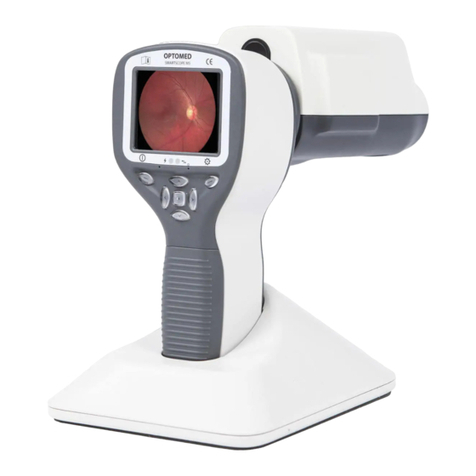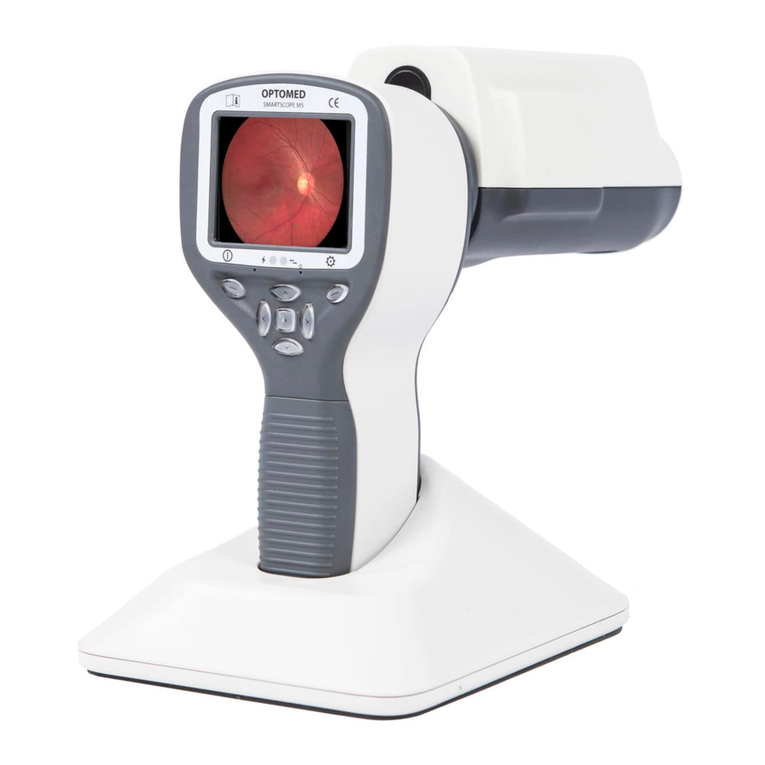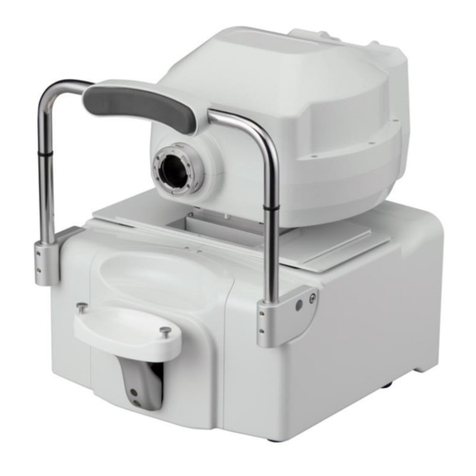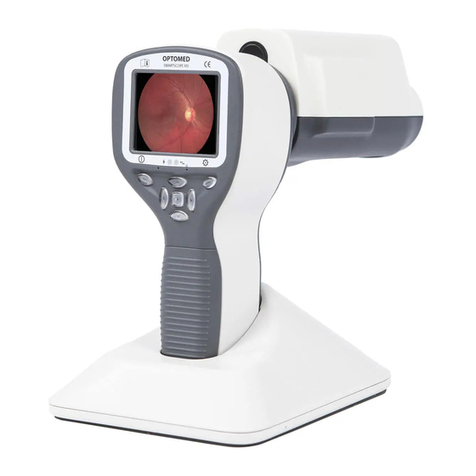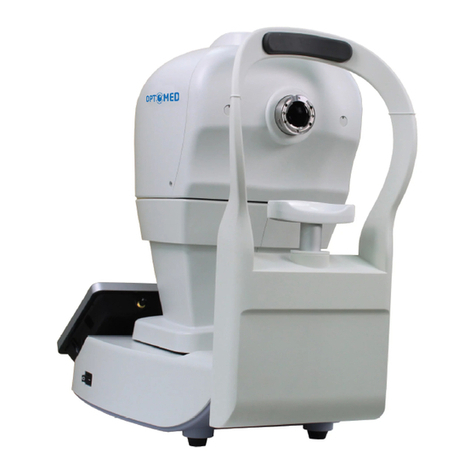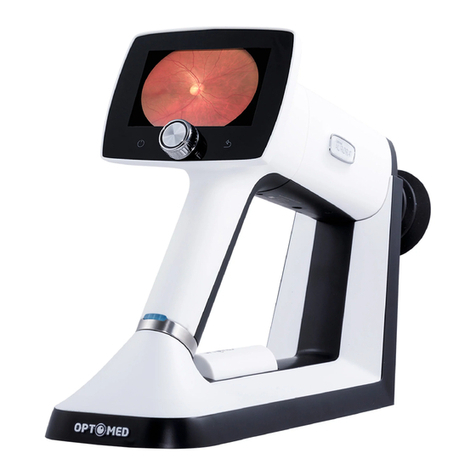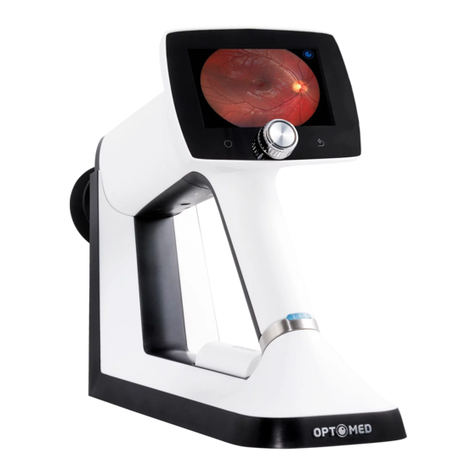
10 Optomed Aurora
1.2 Intended use
Optomed Aurora Camera is a medical digital camera that is used with dedicated optics modules intend-
ed to capture images and video of the fundus of the eye and surface of the eye.
Optomed Aurora Camera with Optomed Aurora Retinal Module is intended to capture digital images and
video of the fundus of the human eye.
Optomed Aurora Camera with Optomed Aurora Anterior Module is intended to capture digital images and
video of the surface of the human eye and surrounding areas.
1.3 Contraindication
Optomed Aurora is classified as Group 2 based on standard ISO 15004-2:2007. The daily usage time and
maximum allowed number of pulses presented below is calculated on the basis of optical classification results.
WARNING!
The light emitted from this instrument is potentially hazardous. The longer the duration of exposure
and the greater the number of pulses, the greater the risk of ocular damage. Exposure to light
from this instrument when operated at maximum output will exceed the safety guideline aer:
Pulsed light
• 6300 still images / eye / day for Aurora Retinal Module
• 250 still images / eye / day for Aurora Anterior Module
Or alternatively continuous light
• 90 min video recording / eye / day for Aurora Retinal Module
• 8 min video recording / eye / day for Aurora Anterior Module
Please note that the exposure time in video recording and the number of pulses in still imaging from all
light sources are cumulative and additive. If the intensity of any of the light sources is reduced to half of
the maximum output, the exposure time or number of pulses for that light source to reach the exposure
safety guideline is doubled.
Since prolonged intense light exposure can cause ocular damage, the use of the device for ocular examination
should not be unnecessarily prolonged, and the brightness setting should not exceed what is needed to
provide clear visualization of the target structures. Infants, persons withaphakia or diseased eyes will be
at greater risk of ocular damage. The risk may also be increased if the person being examined has had any
exposure with the same instrument or any other ophthalmic instrument using a visible light source during
the previous 24 hours.
|Safety






